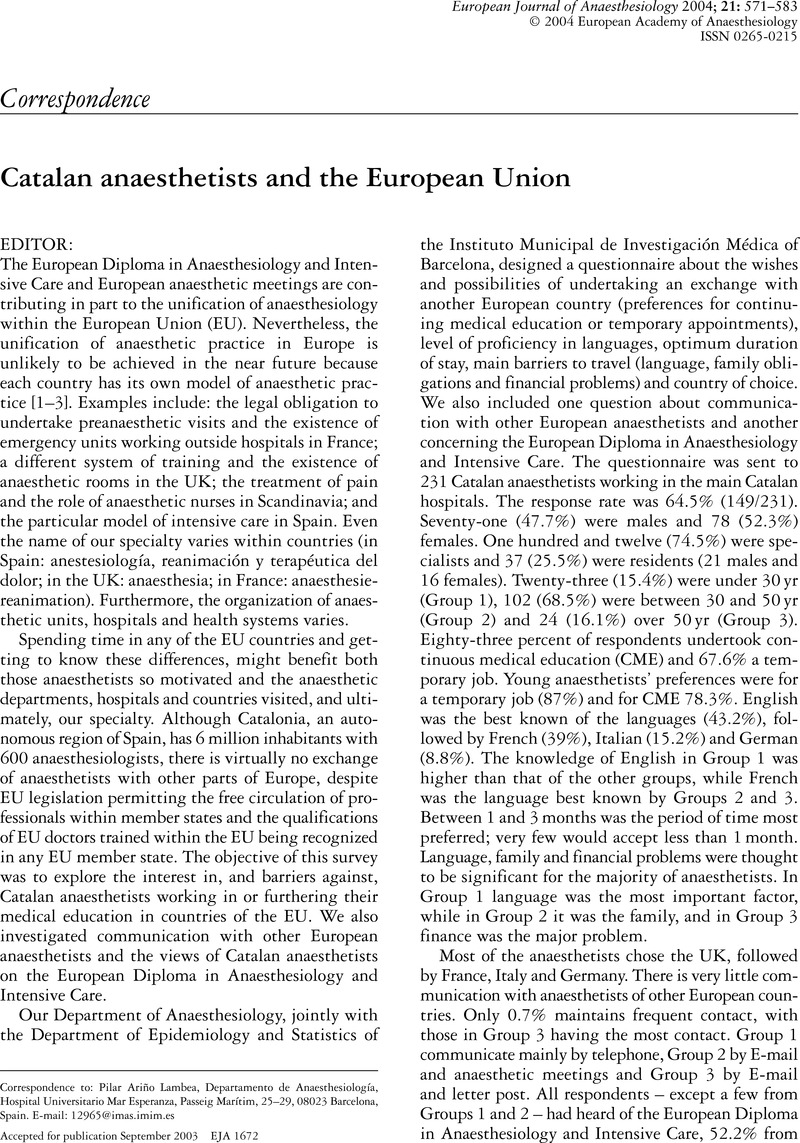No CrossRef data available.
Article contents
Adherence to lung protective ventilation strategies in acute respiratory distress syndrome
Published online by Cambridge University Press: 23 December 2004
Abstract
An abstract is not available for this content so a preview has been provided. Please use the Get access link above for information on how to access this content.

- Type
- Correspondence
- Information
- Copyright
- 2004 European Society of Anaesthesiology
References
De Robertis E, Servillo G, Pezza M, Viscidi D, Tufano R. Derecruitment of the lung induced by stepwise lowering of positive end-expiratory pressure in patients with adult respiratory distress syndrome. Eur J Anaesthesiol 2003; 20: 794–799.Google Scholar
The Acute Respiratory Distress Network. Ventilation with low tidal volumes as compared with traditional tidal volumes for acute lung injury and the acute respiratory distress syndrome. New Engl J Med 2000; 342: 1301–1308.
Matthay MA, Uchida T, Fang X. Clinical acute lung injury and acute respiratory distress syndrome. Curr Treat Option Cardiovasc Med 2002; 4: 139–149.Google Scholar
Petrucci N, Iacovelli W. Ventilation with lower tidal volumes versus traditional tidal volume in adults for acute lung injury and acute respiratory distress syndrome. Cochrane Database Syst Rev 2003; 3: CD003844.Google Scholar
Sakr Y, Vincent JL, Le Gall JR, et al. High tidal volume and positive fluid balance in acute lung injury are associated with worse outcome. Chest 2003; 124: 180S.Google Scholar




